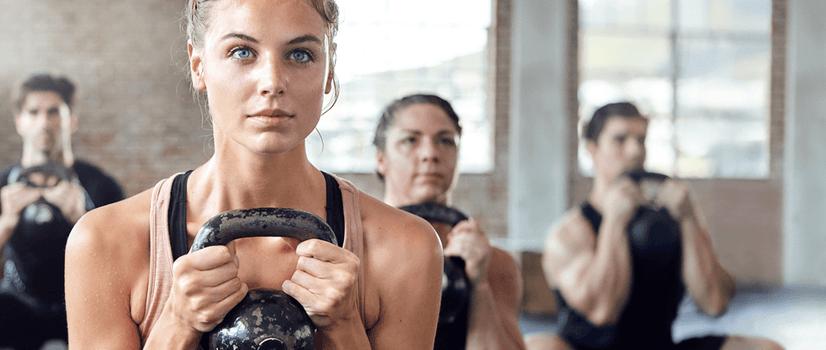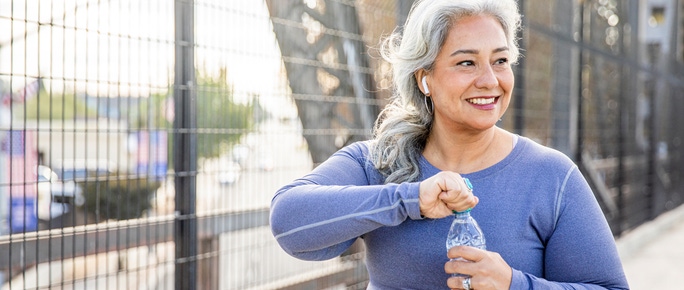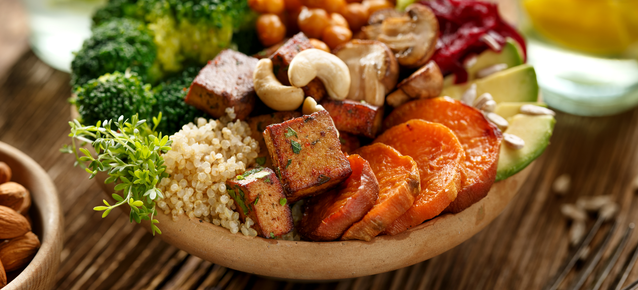Our bodies are made to move. Regular exercise and moving more during your day (like taking the steps or walking to the train station) are essential for your health and wellbeing.
The benefits to moving more are endless
Moving more:
Keeps your body stronger. Exercise keeps your muscles, bones and joints in tip top shape, keeping your body young and more resilient to stress.
Keeps excess weight off. Moving more helps prevent weight gain and builds healthy muscle tone, making you look and feel great.
Improves balance. Helps improve coordination and balance, and helps to prevent falls as you age.
Enhances brain function. It helps to improve memory, concentration and mental sharpness.
Boosts mood. Moving more increases optimism and can lower feelings of stress and anxiety.
Reduces your risk of chronic disease. Regular exercise can reduce your risk of heart disease, diabetes, and some cancers.
Physical activity guidelines
Australia’s physical activity guidelines provide some scientific recommendations:
1. If you’re not moving, start, and gradually build up your exercise until you meet the recommended targets.
2. Move most days of your week, preferably all.
3. Aim for:
150-300 minutes (2 ½ to 5 hours) of moderate intensity exercise each week, or
75-150 minutes (1 ¼ to 2 ½ hours) of vigorous intensity exercise each week, or
A combination of both.
4. Do strength training for at least 2 days each week.
5. Reduce the amount of time you spend sitting.
6. Break up long periods of sitting as often as you can.
Nutrition for exercise and training
Refuelling your body is key when recovering from exercise and strength training. Refuelling well allows your muscles to recover, repair, and replenish their energy (or glycogen) stores.
The daily meals you eat (like your breakfast, lunch and dinner) are enough to help with this process, but sometimes extra nutrition is required when we train competitively or for longer periods of time.
Failing to fuel your body properly will not only slow recovery and performance, but can also:
increase levels of tiredness
increase muscle soreness
increase risk of injury
result in poor muscle adaptation and gains, and
weaken the immune system.
Top nutrition tips for exercise and recovery
1. Eat regular meals
Skipping meals is not a good idea when it comes to exercise and recovery. Remember to include breakfast, lunch and dinner, and some snacks if needed. This will ensure that your blood sugar levels are stable and your muscle glycogen stores are well maintained.
2. Don’t cut out carbohydrates
If you’re on a low carbohydrate diet, then think again. Your muscles (and your brain) rely heavily on carbohydrates for fuel. The carbs you eat are stored as glycogen in your muscles so that your muscles have the energy they need to swim laps or lift weights. The glycogen in your muscles can be depleted after 60 to 90 minutes of intense exercise, so it’s important to replenish them by eating carbohydrates at every meal. When eating carbohydrates, choose mostly wholegrains like brown grainy breads, wholegrain cereals, and brown rice. Check out our article Why choose wholegrains? for more info.
3. Include protein in your meals and snacks
Protein provides much needed amino acids to your muscles to help them repair and create new muscle fibres where needed. Having some protein with carbohydrates in your meal may also help replenish your muscle glycogen stores faster. Different food protein sources that can help with muscle recovery include: legumes (like lentil burgers, tofu, and tempeh), nuts, eggs, dairy milk or fortified soy milk, yoghurt, fish, lean chicken, or lean red meats.
4. Eat and drink enough energy
The amount of fuels your muscles need depends on the intensity and duration of your exercise. It your training is intense, make sure you’re not reducing your meal portions unnecessarily, and always keep some snacks on hand. Snacks that contain a mixture of carbohydrates and protein, like a fortified dairy or dairy free milk (like soy), provide quick and easy ways to refuel and rehydrate your body.
5. Hydrate consistently
Begin your exercise well hydrated, and rehydrate as needed during and after your exercise sessions. Staying hydrated will help replace fluids that have been lost through sweat but also help improve your exercise recovery. Depending on the intensity of your session you may also require electrolytes. When it comes to hydration, water (with or without electrolytes) is the best fluid of choice. Sugary liquids (like soft drinks) or caffeinated beverages (like coffee and energy drinks) aren’t the best hydrators and are poor recovery choices.
6. Take time to rest
Rest is a very important part of recovery. When your body rests it can repair and adapt, making it ready for the next challenge. If you over train and neglect rest times, you can compromise your recovery and increase your risk of injury. Rest is an important investment in your future performance.
Quick foods for exercise recovery
Eating a variety of wholegrains, proteins, legumes, vegetables, fruits, nuts, seeds, and dairy or dairy free alternatives, are key for exercise recovery.
Some quick recovery foods that can help, include:
Snack foods like fruit, a dairy or dairy alternative drink, savoury muffins, mini vegetable frittatas, wholegrain sandwiches, yoghurts, protein drinks such as Sanitarium pb nutritionTM, and wholegrain muesli or oat bars.
Quick meals like a bowl of wholegrain cereal such as Weet-BixTM with dairy or dairy free milk, a banana berry smoothie, leftover pasta with pesto, or leftover brown rice stir-fried with vegetables.
Speak to an Accredited Practicing Dietitian or Accredited Sports Dietitian
Keep in mind that every person’s nutrient needs and exercise goals are unique. If you’re just starting off and would like to develop a nutritional plan to support a regular exercise routine than speak to an Accredited Practicing Dietitian. If you’re an athlete or you’re preparing for your first marathon than an Accredited Sports Dietitian can provide you with more specialised dietary advice and support.



